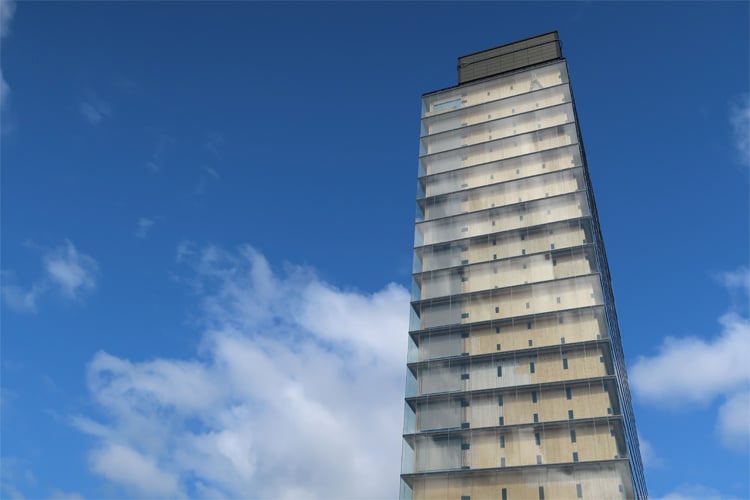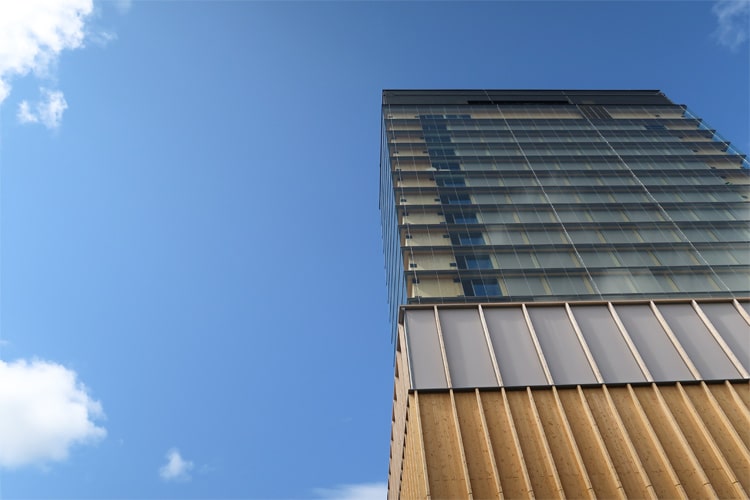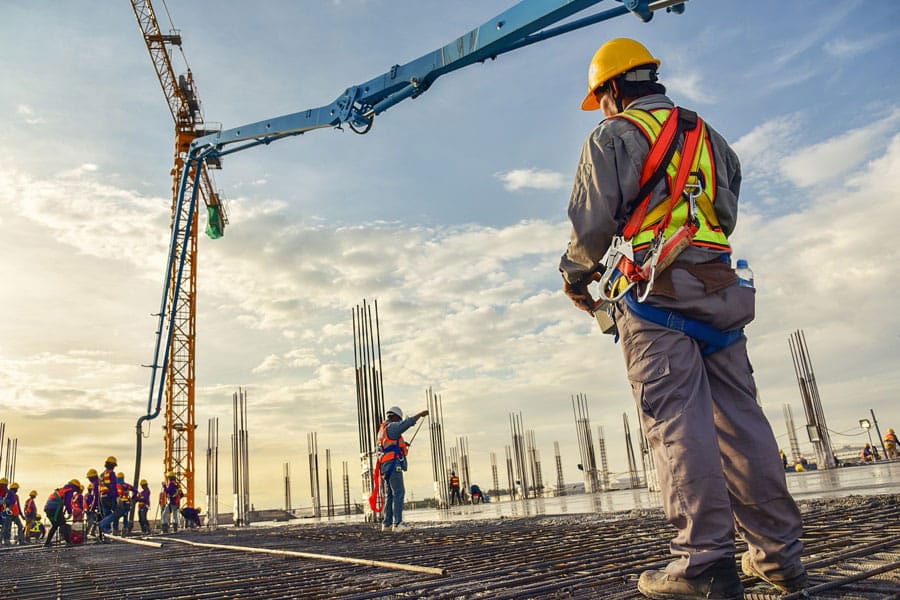Photos by Jannike Reinholdsson
With climate change and sustainability ranking high on the agenda of architects, construction companies and environmentally savvy clients, it is no surprise that timber is experiencing a renaissance as a building material.
The idea of constructing buildings predominantly made from wood has grown in popularity in recent years, with designers and developers looking to create sustainable and long-lasting assets at a time when reducing the built environment’s impact on the world is a pressing concern for both the construction industry and wider society.
An Effective Material
Timber is an obvious choice. Natural, and in many places abundant as well as renewable, it takes far less energy to transform timber into the frames, joists, supports and other products used in construction than it does to create similar items in concrete or steel.
Timber products are light but strong and quick to assemble, either on-site or prefabricated in a factory and then delivered to a job in a complete or near-complete state. Timber can also offer good thermal insulation, while engineered wood products like cross-laminated timber (CLT) can be very effective in combating climate change by its ability to lock in carbon.

For years, the idea of erecting high-rise buildings made from timber seemed like a pretty tall order, but technological advances now mean that projects made from wood are not being limited to low-level schemes.
The tallest timber building in the world is said to be the Mjösa Tower, an 18-story, 85.4m-tall (280.2ft-tall) mixed-use timber structure in Brumunddal, Norway, featuring apartments, a hotel, offices and an indoor swimming pool.
The tower contains 2,600m³ (91,800ft³) of timber structures, although the decks of the upper seven floors are made from concrete to improve the strength of the building.
It helps that Norway has a lot of forested land covering the country. Its next-door neighbor, Sweden, is particularly blessed with an abundance of trees; the country has almost twice as much forested land (279,800km², or 108,000mi²) as Norway and has been forging ahead with putting up tall buildings made from timber for a number of years.
The Sara Kulturhus
A recent and high-profile example is the Sara Kulturhus, currently being built in Skellefteå, a small town located just below the Arctic Circle, 800km (500mi) north of the Swedish capital Stockholm.
At around 80 meters (260 feet) tall and comprising 20 stories, the Sara Kulturhus is being constructed from timber sourced from forests in the area around Skellefteå and is due to open in September this year. The building will be home for the Västerbotten Regional Theatre, house a 205-room hotel, along with conference space, and new homes for the Anna Nordlander Museum, the city’s art gallery and also its main library.

The scheme’s Gothenburg-headquartered architect White Arkitekter worked with Norwegian structural engineering firm Florian Kosche on two different construction systems for the building: one for the cultural center and one for the hotel.
The high-rise part, which houses the hotel, is constructed of premanufactured modules in CLT, stacked between two lift shafts. The low-rise element consists of a timber frame with pillars and beams made of glue-laminated beams and cores and shear walls in CLT.
White Arkitekter said this method of construction helps to redistribute loads and boosts the high-rise element’s structural stability.
Efficient and Robust
The firm said the wood construction was designed to endure Skellefteå’s harsh weather conditions—in winter, temperatures can plummet to nearly minus 30 degrees centigrade—while also remaining energy efficient.
The building’s green roof will add to the structure’s thermal insulation, while also absorbing noise pollution, enhancing biodiversity and delaying rainwater run-off, the firm added.

The limitations on high-rise buildings made from wood stem mainly from safety issues, particularly around fire. CLT can point to claims of good fire resistance, and strict adherence to building regulations is always to be expected. For its part, the Mjösa Tower is said to be able to withstand a significant fire, thanks to fire safety systems that can control the spread of fire both horizontally and vertically.
But the scale of a disaster like the Grenfell Tower fire in London in 2017, while not a wooden building, inevitably means the drive for tall buildings made of a flammable material such as timber will come under intense scrutiny.
What’s Next For Timber?
The Grenfell fire, which resulted in the loss of 72 lives, prompted the U.K. government to ban combustible cladding on external walls of residential buildings more than 18 meters (59 feet) high. Concerns remain around the safety of tall buildings, timber or not, and for obvious reasons.
That said, it is clear that well-designed wooden buildings, delivered to the highest specification and meeting the needs of the environment, occupants, owners and wider society—like the Sara Kulturhus in Skellefteå—can have a future.
Efforts to roll back climate change are forcing the construction industry to examine how it can go about delivering the sustainable buildings we will all require just at a time when the resources to deliver them are stretched and will need to be used more carefully than ever.
Timber is undeniably going to play an integral part in creating the sustainable, environmentally–friendly buildings of tomorrow. And for some, this is not before time.















